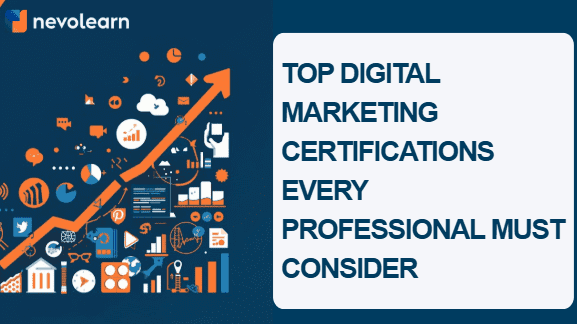 1.png)
Assured 30% Off On All Courses
.png)

 Building Machine Learning Workflows with Snowflake
Building Machine Learning Workflows with SnowflakeYou’ve got data in Snowflake—and now you want to build real AI. The good news? Snowflake isn’t just for storing and querying data. It’s gearing up to be a full-fledged ML platform. Today, you can manage an end-to-end machine learning workflow with Snowflake entirely inside the platform, skipping clunky data pipelines and doing everything—feature engineering, training, deployment, model monitoring—in one place.
Let’s unpack how this works in real life, why it matters, and how you can get started!
1. Data Exploration & Feature Preparation
ML starts with data, and Snowflake has always been great at that. But it gets better! With Snowpark ML and Snowflake Notebooks (Container Runtime), you don’t need to export CSVs for data prep. Everything runs on the Snowflake engine using familiar Python libraries—scikitlearn-, pandas, XGBoost, LightGBM.
You define your transformations and SQL queries right where the data lives. That’s truly building your end-to-end machine learning workflow with Snowflake, eliminating data movement, manual exports, or wrangling in external tools.
2. Feature Store for Reusability & Governance
Imagine you’ve engineered a “customer churn” feature—wouldn’t it be great to reuse that across projects? With Snowflake’s integrated Feature Store, you can define, store, and share features consistently, streaming or batch.
This is central to establishing robust end-to-end ML workflows with Snowflake, ensuring features are versioned, governed, and production-ready.
3. Model Training in Snowflake
Next, you train your models without leaving Snowflake. Thanks to Snowpark ML Modeling API, Snowflake distributes training logic across its compute layer, sparing you from building your own hyperparameter tuning systems.
You can train everything—scikitlearn-, XGBoost, LightGBM, even PyTorch or TensorFlow models—all close to your data, as part of a seamless end-to-end machine learning workflow with Snowflake.
4. Registering & Managing Models
Once trained, models need to be managed. Snowflake’s Model Registry lets you store versions, track metadata, approve models for production, and assign roles for access.
In more traditional setups, model governance can be a headache. Here, it’s built into your end-to-end ML workflows with Snowflake, keeping everything secure, compliant, and easy to monitor.
5. Deployment and Inference
Deploying a model can be slow and error-prone—until now. With Snowpark Container Services, you can deploy for batch or real-time inference directly on Snowflake CPUs or GPUs, no external API needed.
That means your end-to-end machine learning workflow with Snowflake runs entirely under one platform: train, deploy, serve—all in Snowflake.
6. Monitoring, Observability & Lineage
What happens after deployment matters just as much as before. Snowflake provides ML Observability dashboards to monitor drift, performance, and create alerts. Data and model lineage give visibility into both your data pipelines and model flow.
No more guessing whether a feature update broke your model—this completes your end-to-end ML workflows with Snowflake.
Real-World Success Stories
- Spark New Zealand uses Snowpark ML to train models for its Skinny Mobile brand and runs inference directly on Snowflake—cutting complexity and improving governance.
- Scene+ in Canada reported 60% faster time-to-production and 35% cost reduction, attributing success to Snowflake’s unified notebooks, registry, and observability.
- Cooke Aquaculture built predictive models for fish production using Snowpark ML and notebooks—all within Snowflake—bringing analytics speed and scale to the seafood business.
What’s the Difference?
- No data silos: Everything happens in one secure, governed environment.
- Cleaner pipelines: From data to model, no extra code, no cloud hops.
- Faster experimentation: Spin up notebooks, train models, roll out in hours.
- Scalability: Use Snowflake’s scale, from thousands to millions of rows.
- Strong governance: Versioning, access control, lineage—all built in.
Put it all together, and you get a complete, repeatable end-to-end machine learning workflow with Snowflake that’s easier to build, run, and evolve.
Getting Started
- Begin by using Snowpark ML Modeling for simple models. Train on small datasets, iterate quickly.
- Dip a toe into the Feature Store to standardize key feature pipelines early.
- Use Notebooks (Container Runtime) for interactive data exploration—skip Jupyter data exports.
- Log your first model with Model Registry and call it via SQL to test inference.
- Enable ML Observability—even on your pilot model—to nail correct behavior from day one.
- Automate your pipeline with ML Jobs, so the next iteration trains and serves automatically.
Last Words
For anyone building machine learning in 2025, eliminating friction between data and deployment is critical. Snowflake makes it possible to run an end-to-end machine learning workflow with Snowflake that’s clean, governed, and scalable. From data prep to monitoring, everything lives in one platform.
That’s not just evolution—it’s a revolution for ML teams! And you must be a part of it, if you don’t want to be left behind!
Want to go deeper?
Nevolearn offers hands-on Snowflake training on building end-to-end ML workflows with Snowflake—covering Snowpark ML, Feature Store, Model Registry, and Observability.
Get model-ready faster, with expert guidance from Team Nevolearn!
Want to Level Up Your Skills?
EXPLORE BY CATEGORY
End Of List
No Blogs available Agile









